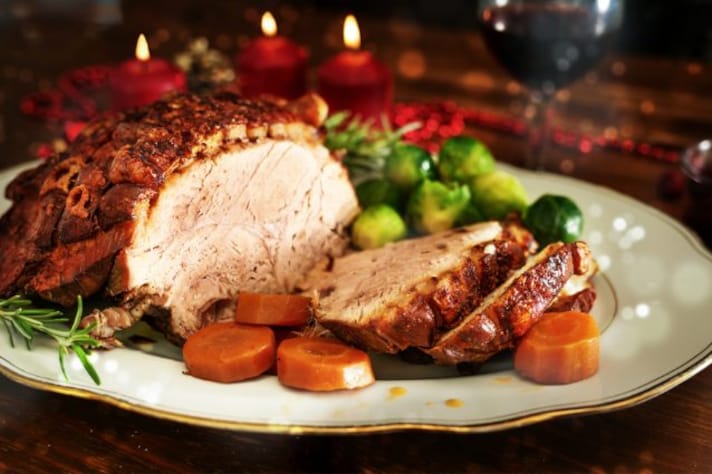
When the holiday season arrives, kitchens all across the country are filled with the delicious aromas of turkey, prime rib, and pork roast slowly baking to perfection. But while many might consider the idea of covering their roast during cooking as an easy way to preserve moisture, it’s actually a mistake that could leave you with a dry, lackluster meal that no amount of gravy can save.
Covering Won’t Help Keep Your Roast Juicy
When you’re preparing for a festive meal, especially one as significant as Christmas dinner, the pressure to get the roast just right is real. The idea of covering a roast to “seal in the juices” may seem like common sense, but in reality, it’s a bit of a myth. Roasts are best cooked with the heat surrounding them, allowing the Maillard reaction to take place—this is the magic that gives your meat that golden-brown, crispy exterior. When you cover the roast, you trap moisture inside, but not in a way that benefits the meat. It can create steam, which in turn makes the surface soggy and prevents that flavorful, caramelized crust from forming. And let’s be honest—no one wants a soggy roast, especially when the centerpiece of your Christmas dinner is supposed to be the star.
The Secret to a Perfect Roast
For any roast—be it pork, beef, or turkey—one of the most sought-after features is a crispy, golden skin. There’s no denying the satisfaction that comes from cutting into a perfectly roasted piece of meat, and that starts with leaving the roast uncovered. The key is high, dry heat. Roasting uncovered allows the skin to crisp up, creating a beautiful contrast between the crunchy outside and the juicy, tender inside. When you cover your roast, the skin becomes steamy, leading to a less-than-ideal texture. A roast without that crispiness is like a Christmas tree without decorations—not nearly as impressive as it should be.

Dry Heat is Your Best Friend
Roasting, by definition, requires dry heat, and there’s a reason why it’s often done in the oven with the door closed but the roast itself left uncovered. The dry heat from the oven surrounds the meat, drawing out the moisture within and evaporating it, which leads to a concentrated, flavorful interior. This is what helps your roast stay tender and juicy. If you cover it, the moisture gets trapped and turns into steam, creating an environment that's more suited for braising or steaming than roasting. While some might argue that covering retains moisture, what they’re missing is that it dilutes the natural flavors and leaves the meat less savory and robust. The holiday roast deserves nothing less than the best, so let it cook freely in the oven!
The Perfect Roast Needs Airflow
This is where a little bit of kitchen science comes into play. Proper airflow is crucial to achieving the perfect roast. When you cover a roast, you’re essentially locking in moisture and steam, creating a very different cooking environment than if the roast were exposed to the dry heat of the oven. Think of it like baking a potato—if you wrap it in foil, the steam has nowhere to escape, and the potato ends up soggy instead of crispy. The same logic applies to a roast. By leaving it uncovered, you allow the heat to circulate around the meat, ensuring it cooks evenly and forms that essential golden crust. Without this crucial step, you risk having an unevenly cooked roast that’s both underdone in parts and overcooked in others.
When Should You Cover Your Roast?
While leaving a roast uncovered is usually the best option, there are rare occasions when covering is acceptable—though these situations are typically short-lived. The most common example is when you’re cooking a particularly lean roast, like a loin of pork or a very lean turkey breast, which could dry out without any help. In these cases, covering your roast with aluminum foil during the initial stages of cooking can help prevent excessive moisture loss. After the meat has cooked through, you should uncover it to allow the roast to brown and crisp up. Another situation where covering a roast makes sense is if you’re cooking it at a low temperature for a longer period (think slow roasting). The foil can help maintain a steady temperature and prevent the roast from drying out, but the key is uncovering it toward the end of the cooking process for the crispy exterior.

A Crucial Step After Roasting? Resting!
Once your roast has come out of the oven, there’s one more crucial step that too many people overlook—let it rest. While the roast is still hot and fresh from the oven, it’s easy to feel the urge to slice into it immediately, but that’s a big mistake. The resting period allows the juices, which have been pushed to the center of the meat during cooking, to redistribute throughout the roast. If you cut into it too soon, all that juicy goodness will escape onto the cutting board rather than staying inside the meat. And yes, this applies whether your roast is covered or uncovered during cooking, but remember—if you’ve cooked it properly by leaving it uncovered in the oven, there’s a much better chance of those juices staying exactly where they need to be.
;Resize,width=767;)
